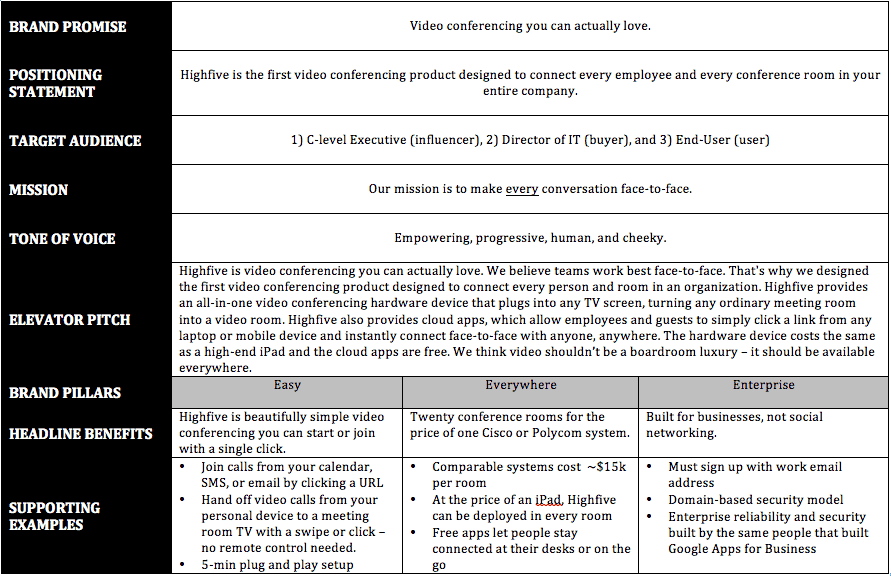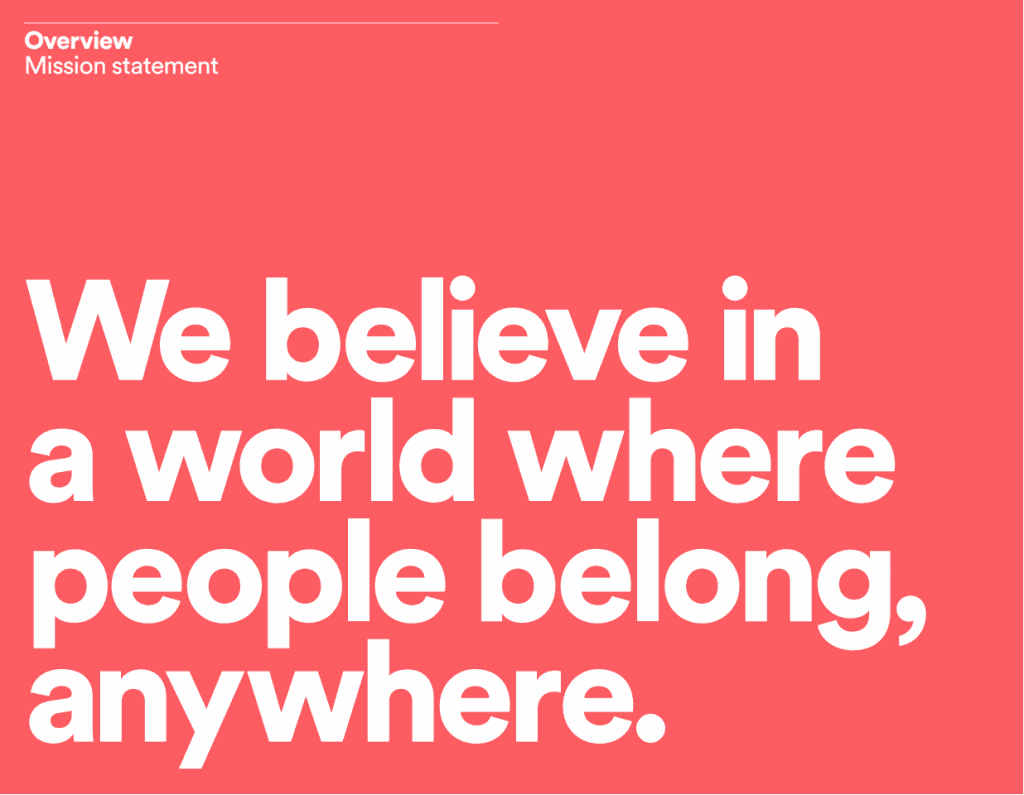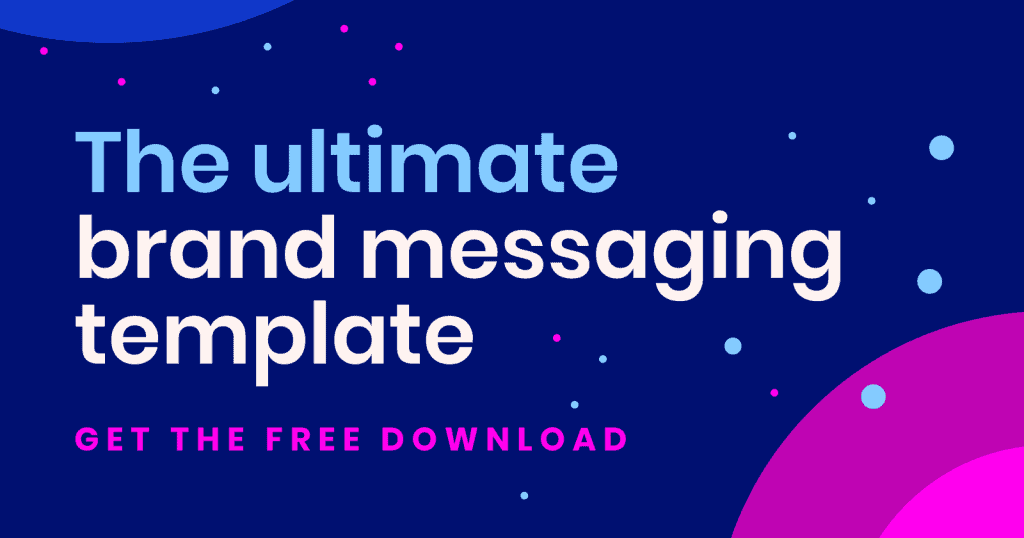The complete guide to brand messaging frameworks
Everything you need to know to build a scalable brand messaging framework to scale your business and your marketing
Read
Whether you’re launching a new business, pivoting in a new direction, or doing a brand refresh, sometimes it’s easier to chip away at the quick action items, right? As in, you might want to make one last product tweak or finish up your latest blog post.
At some point, though, in order to scale, it will become critical to get crystal-clear about your brand’s reason for being. Enter the brand messaging framework.
A messaging framework is a structured written representation of your brand’s unique selling points. A successful messaging framework is easy to understand and clearly differentiates your company from the competition. At the very least, your brand messaging framework should include your business value proposition, target audience, and a statement about what differentiates you from the competition. We also recommend including guidance on message hierarchy and some notion of how your brand messages or features ladder up to a primary, overarching message.
Think of your messaging framework as a solid foundation for building your business and all of its related functions: marketing, communications, advertising, sales, business development, public relations, customer service, and more. Multiple teams and people can benefit from using one shared messaging framework.
Consistent brand presentation across all platforms (website, mobile app, social, etc.) increases revenue by up to 23%, writes Gabriel Shaoolian, CEO of Digital Silk, in Forbes.

Highfive’s messaging framework
“One of the most critical activities — and indeed THE most important marketing activity — that a company must do is establish a strong value proposition for itself and its products with a clear, accurate, compelling message,” says Jamie Barnett, a marketing adviser and investor who specializes in helping tech companies grow.
An effective brand messaging framework makes it painless for employees to answer this question in a nutshell, “What does your company do?” The last thing you want is for a salesperson or any representative of your company to not be able to describe your brand in a sentence or two. If they can’t describe your company with confidence, why should a prospective customer pay attention?
Good brand messaging solves multiple problems at once, explains Jasmine Bina, CEO of Concept Bureau. “A strong story can make issues around user behavior, trust, retention and competitive forces disappear. Just look at Airbnb and their brilliant ‘Belong Anywhere’ positioning.” Effective brand messaging converts complex thoughts into easy-to-understand and memorable messaging.

Airbnb's mission statement
There’s no official one-size-fits-all messaging framework, but there are a number of variations that tend to include the same basic concepts.
Do you have a solid understanding of the person you’re trying to reach with your brand and what makes them tick? If your answer is “sort of,” you probably need to define exactly who your target audience is. For example, if you're an e-commerce company targeting consumers, consider asking following questions before writing a description:
Your brand value proposition is a summarized value that you propose to provide to a customer who uses your product or service. An effective value proposition is persuasive and helps convert a prospect into an actual customer. The value proposition will help you write your brand promise and other elements of your marketing and brand strategy.
A brand positioning statement describes why your product or service is better or different from that of your competition. An effective positioning statement identifies points of competitive differentiation and why they matter to customers.
What’s the difference between messaging and positioning? Megha Narayan, Atlassian’s Head of Brand, Customer, and Content Marketing at Atlassian, says brand positioning is a buzz-wordy way of describing the story you need to tell about yourself relative to others. “The most important part of the positioning is the, well, position. Or in other words, why you? Brand positioning is also internal only, existing to guide and align your team.”
Think of a positioning statement as the intersection of who the audience is, the problem they're experiencing, the need they have, and what alternatives are available to them.
Here’s an example of Hubspot’s positioning statement:
Since 2006, HubSpot has been on a mission to make the world more inbound. Today, over 68,800 total customers in more than 100 countries use HubSpot’s award-winning software, services, and support to transform the way they attract, engage, and delight customers.
Once you’ve written and aligned on your target audience, value proposition, and positioning statement, you’ll be better armed and ready to write public-facing copy, such as a tagline or boilerplate.
Many companies find it helpful to create buyer personas, a fictional or semi-fictional depiction of your target customer. Some businesses focus on one key persona, while others may have several personas or variations of their target audience.
Details make the difference with personas. If you’re ready to go all in, you can include granular info. For example, if you’re a direct-to-consumer brand, you could include your target customers’ favorite TV shows, how much money they spend on certain products, their political beliefs, their daily schedule, and more. If you’re a B-to-B company, you should ask questions that are relevant to your industry. Some companies even give their personas names and photos or illustrations.
Make sure your brand message is actually true. This is not a time to exaggerate or overpromise. Your brand promise should be rooted in what you can deliver. Here are three examples of strong brand promises:
If you have less than a minute to explain what your business is about to a stranger, what would you say? The answer to that question is an elevator pitch or boilerplate. A boilerplate is designed to give people a quick sense of what your is about — ideally, in a way that they’ll understand immediately.
Your mission statement helps define the purpose of your business — as in, how you want to make the world a better place for your existence. A mission statement is intended to be read by both customers, prospects, and internal audiences, such as employees or board members.
10 examples of stand-out mission statements:
A brand voice is the written and verbal expression of a brand. Brand voice is the general conception of what your brand “sounds” like — even in writing.
How would you describe your brand voice? Would you say it’s friendly and welcoming, or authoritative? Is your brand voice hilarious or serious? Is it charming or professional? These are just some examples of descriptive words that you may want to use to describe your brand voice in your messaging framework and brand styleguide. If you’re looking for more insights about developing a memorable brand voice, check out our Complete Guide to Brand Voice.
Looking for more examples? Read How good is your brand voice and tone? 7 neglected essentials from top marketing messaging frameworks.
How many words should a brand messaging framework be?
A messaging framework tends to include a variety of lengths of brand messaging, ranging from a tagline and one-sentence summary to a paragraph or a one-pager. Think of brand messaging frameworks as the building blocks of your brand. When done well, you can build so much from that initial block: your About page, advertising and social media campaigns, website content, sales material, and more.
How do you know if your messaging framework is actually effective?
As you’re writing your framework, be sure to consider as many use cases as possible, says Barnett. “You don't need to pre-write everything, but you need enough building blocks to cover most use cases and give people guidance,” explains the tech startup adviser.
For example, if you have three value propositions, your messaging framework should indicate how they're written, defined, measured, and ordered. If your product has five key features and 10 ancillary features, the framework should list them in order of importance, show exactly how they're written, define them, and provide a short description of what they do and their benefit to users. “That way, even if someone's writing some pithy, clever web copy about that feature, they know at a base level exactly what it does and where it sits in the pecking order,” Jamie says.
You may have heard copywriters or writers say that it’s harder to write short than it is to write long. That is often the case when it comes to writing a catchy or memorable one-line description or tagline. Summarizing a brand’s core message is usually the result of a lot of writing and thinking, but can be worth every penny if you get it right.
Now that you’ve read all about the components of a messaging framework and how they can help your business, you’re ready to create your own.
Download the ultimate brand messaging template here.


Lisa J. Young, Twitter
Content Strategy Manager
![]()
